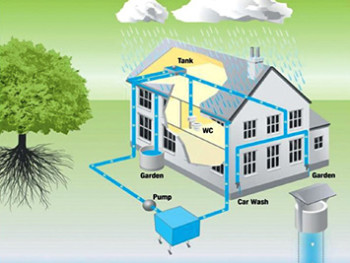Rain Water Harvesting
- Home
- Rain Water Harvesting

Rain Water Harvesting
A Reverse Osmosis (RO) Water Treatment Plant is a specialized system designed to purify and filter water through a process called reverse osmosis. This technology is widely used to produce clean and safe drinking water, remove contaminants, and improve the quality of water for various industrial, commercial, and residential applications. Here’s an overview of how an RO water treatment plant works and its components:
- Water Intake: The process begins with the intake of raw water, which can be sourced from various places such as rivers, lakes, wells, or municipal water supplies. This water often contains impurities, including minerals, organic matter, bacteria, and other contaminants.
- Pre-Treatment: Before the water enters the RO membrane, it goes through a pre-treatment phase to remove larger particles and impurities that could potentially damage the membrane. Common pre-treatment steps include sediment filtration, carbon filtration, and sometimes chemical dosing to control scaling and disinfection.
- RO Membrane: The heart of the RO system is the semi-permeable membrane. Water is forced through this membrane under pressure, which separates the water molecules from the dissolved salts, minerals, and other contaminants. The purified water, known as permeate, passes through the membrane, while the concentrated brine containing the rejected impurities is typically flushed away or recycled for further treatment.
- Post-Treatment: After passing through the RO membrane, the permeate may still contain a small number of impurities. To improve water quality and taste, post-treatment processes such as remineralization and disinfection are often applied. Remineralization may involve adding minerals back into the water to enhance taste and prevent the water from becoming too aggressive, which can corrode plumbing.
- Storage and Distribution: The treated water is stored in a clean water storage tank before being distributed for various purposes. In residential applications, this is typically for drinking, cooking, and household use. In industrial and commercial settings, the water may be used for manufacturing processes, cooling systems, or other specific applications.
Benefits of RO Water Treatment:
- Highly Effective: RO systems are known for their effectiveness in removing a wide range of contaminants, including dissolved salts, heavy metals, bacteria, and more.
- Improved Taste and Quality: The process results in cleaner, better-tasting water.
- Versatile: RO systems can be scaled up or down to meet the needs of various applications, from small household systems to large industrial installations.
However, it’s essential to consider the following aspects when using RO water treatment:
- Waste Water: RO systems produce a concentrated brine stream that contains the removed impurities. Proper disposal or treatment of this brine is necessary to minimize environmental impact.
- Energy Consumption: The process requires energy to pressurize the water through the membrane, so energy costs should be considered.
RO water treatment plants are a valuable technology for ensuring access to safe and clean drinking water, as well as for various industrial and commercial processes where high-quality water is essential.

